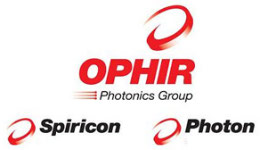Welding with a laser is a very common process, even though a few welding applications still need customized solutions and skills.
Welding Large Parts of a Boat
A powerful 12 KW fiber laser is owned by Ophir‘s customer in the shipyard market. Most of the time it is used to weld small metal pieces, but a new process was required for a new application.
Welding large parts of a boat can take up to 20 minutes over several meters, this creates new challenges.
The focal head and the focal lens are overheated during this 20 minute process. This results in shifting of the focal plane, affecting the weld itself. Ophir’s BeamWatch is a new product that plays a vital role in this situation (Figure 1).
.gif)
Figure 1. BeamWatch, non-contact laser beam measurement system.
BeamWatch enables users to instantly measure several laser parameters, without actually contacting with the beam. This technology is referred to as disruptive technology, which provides more precise measurements, compared to the current systems.
BeamWatch, through a GigE cable, was plugged into the customer’s computer. This allowed working outside of the safety cabin. An Ophir 10 KW thermal head was also connected to block the beam and measure power.
The Measurements
Alignment of the power meter and the BeamWatch system along with the laser took just a minute. Measurement of several significant laser parameters was also taken by shooting inside the 12 mm hole (Figure 2). These parameters include waist location, focal shift, M2, and diameter and divergence in real time during a limitless period.
.gif)
Figure 2a and b. Beam waist measurement at 1 minute into the weld and at 7 minutes into the weld.
The time taken for the first weld measurement was 10 minutes at 8 KW. The most outstanding result occurred only after 7 minutes when the focal plan moved by 8 mm. Towards the end of the test period, the numerical data was saved and the user generated graphs for every single parameter over the time of the weld, for a wide range of focal lens and at varied powers (Figure 3).
.gif)
Figure 3. F300 focal lens @ 8KW.
Conclusion
A real effect on the focal plan is obtained when laser welding takes place for a prolonged time period. This is completely amplified by the laser power (Figure 4). Increased usage of power results in increased focal shift. This can turn out to be critical based on the user’s application.
.gif)
Figure 4. 4min-Focal Shift VS Laser Power
On a theoretical level, laser manufacturers feel that this effect should be a lot lower. For instance, with robot movement and dirt optics, a focal shift above 10 mm after 10 minutes was observed.
BeamWatch highlights the need to control the focal shift in high power applications. This will help customers to optimize processes and define all focus heads during a limited production timeout.

This information has been sourced, reviewed and adapted from materials provided by Ophir Optronics Group.
For more information on this source, please visit Ophir Photonics Group.